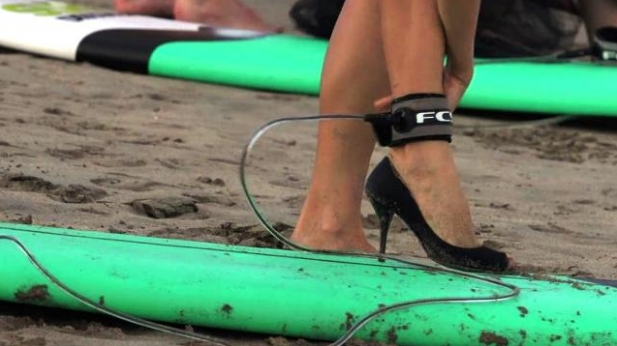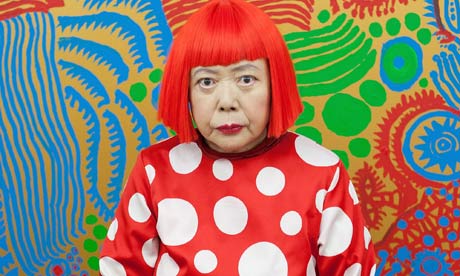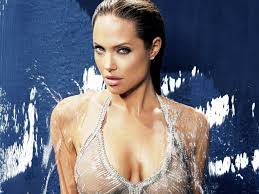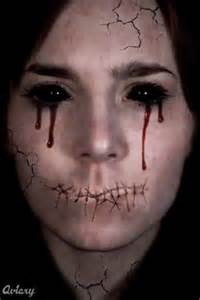 |
| For our journey is not complete until our wives, our mothers and
daughters can earn a living equal to their efforts... |
CNN Politics
Vice President Biden, Mr. Chief Justice, members of the United States Congress, distinguished guests, and fellow citizens:
Each time we gather to inaugurate a President we bear witness to the
enduring strength of our Constitution. We affirm the promise of our
democracy. We recall that what binds this nation together is not the
colors of our skin or the tenets of our faith or the origins of our
names. What makes us exceptional - what makes us American - is our
allegiance to an idea articulated in a declaration made more than two
centuries ago:
“We hold these truths to be self-evident, that all men are created
equal; that they are endowed by their Creator with certain unalienable
rights; that among these are life, liberty, and the pursuit of
happiness.”
Today we continue a never-ending journey to bridge the meaning of
those words with the realities of our time. For history tells us that
while these truths may be self-evident, they’ve never been
self-executing; that while freedom is a gift from God, it must be
secured by His people here on Earth. The patriots of 1776
did not fight to replace the tyranny of a king with the privileges of a
few or the rule of a mob. They gave to us a republic, a government of,
and by, and for the people, entrusting each generation to keep safe our
founding creed.
And for more than two hundred years, we have.
Through blood drawn by lash and blood drawn by sword, we learned that
no union founded on the principles of liberty and equality could
survive half-slave and half-free. We made ourselves anew, and vowed to
move forward together.
Together, we determined that a modern economy requires railroads and
highways to speed travel and commerce, schools and colleges to train our
workers.
Together, we discovered that a free market only thrives when there are rules to ensure competition and fair play.
Together, we resolved that a great nation must care for the
vulnerable, and protect its people from life’s worst hazards and
misfortune.
Through it all, we have never relinquished our skepticism of central
authority, nor have we succumbed to the fiction that all society’s ills
can be cured through government alone. Our celebration of initiative
and enterprise, our insistence on hard work and personal responsibility,
these are constants in our character.
But we have always understood that when times change, so must we;
that fidelity to our founding principles requires new responses to new
challenges; that preserving our individual freedoms ultimately requires
collective action. For the American people can no more meet the demands
of today’s world by acting alone than American soldiers could have met
the forces of fascism or communism with muskets and militias. No single
person can train all the math and science teachers we’ll need to equip
our children for the future, or build the roads and networks and
research labs that will bring new jobs and businesses to our shores.
Now, more than ever, we must do these things together, as one nation and
one people.
This generation of Americans has been tested by crises that steeled
our resolve and proved our resilience. A decade of war is now ending.
An economic recovery has begun. America’s
possibilities are limitless, for we possess all the qualities that this
world without boundaries demands: youth and drive; diversity and
openness; an endless capacity for risk and a gift for reinvention. My
fellow Americans, we are made for this moment, and we will seize it - so
long as we seize it together.
For we, the people, understand that our country cannot succeed when a
shrinking few do very well and a growing many barely make it. We believe that America’s prosperity must rest upon the
broad shoulders of a rising middle class. We know that America thrives
when every person can find independence and pride in their work; when
the wages of honest labor liberate families from the brink of hardship.
We are true to our creed when a little girl born into the bleakest
poverty knows that she has the same chance to succeed as anybody else,
because she is an American; she is free, and she is equal, not just in
the eyes of God but also in our own.
We understand that outworn programs are inadequate to the needs of
our time. So we must harness new ideas and technology to remake our
government, revamp our tax code, reform our schools, and empower our
citizens with the skills they need to work harder, learn more, reach
higher. But while the means will change, our purpose endures: a nation
that rewards the effort and determination of every single American.
That is what this moment requires. That is what will give real meaning
to our creed.
We, the people, still believe that every citizen deserves a basic
measure of security and dignity. We must make the hard choices to
reduce the cost of health care and the size of our deficit. But we
reject the belief that America must choose between caring for the
generation that built this country and investing in the generation that
will build its future. For we remember the lessons of our
past, when twilight years were spent in poverty and parents of a child
with a disability had nowhere to turn.
We do not believe that in this country freedom is reserved for the
lucky, or happiness for the few. We recognize that no matter how
responsibly we live our lives, any one of us at any time may face a job
loss, or a sudden illness, or a home swept away in a terrible storm.
The commitments we make to each other through Medicare and Medicaid and
Social Security, these things do not sap our initiative, they strengthen
us. They do not make us a nation of takers; they free us
to take the risks that make this country great.
We, the people, still believe that our obligations as Americans are
not just to ourselves, but to all posterity. We will respond to the
threat of climate change, knowing that the failure to do so would betray
our children and future generations. Some may still deny
the overwhelming judgment of science, but none can avoid the devastating
impact of raging fires and crippling drought and more powerful storms.
The path towards sustainable energy sources will be long and
sometimes difficult. But America cannot resist this transition, we must
lead it. We cannot cede to other nations the technology that will
power new jobs and new industries, we must claim its promise. That’s
how we will maintain our economic vitality and our national treasure -
our forests and waterways, our crop lands and snow-capped peaks. That
is how we will preserve our planet, commanded to our care by God.
That’s what will lend meaning to the creed our fathers once declared.
We, the people, still believe that enduring security and lasting
peace do not require perpetual war. Our brave men and
women in uniform, tempered by the flames of battle, are unmatched in
skill and courage. Our citizens, seared by the memory of
those we have lost, know too well the price that is paid for liberty.
The knowledge of their sacrifice will keep us forever vigilant against
those who would do us harm. But we are also heirs to those who won the
peace and not just the war; who turned sworn enemies into the surest of
friends - and we must carry those lessons into this time as well.
We will defend our people and uphold our values through strength of
arms and rule of law. We will show the courage to try and resolve our
differences with other nations peacefully –- not because we are naïve
about the dangers we face, but because engagement can more durably lift
suspicion and fear.
America will remain the anchor of strong alliances in every corner of
the globe. And we will renew those institutions that extend our
capacity to manage crisis abroad, for no one has a greater stake in a
peaceful world than its most powerful nation. We will support democracy
from Asia to Africa, from the Americas to the Middle East, because our
interests and our conscience compel us to act on behalf of those who
long for freedom. And we must be a source of hope to the poor, the
sick, the marginalized, the victims of prejudice –- not out of mere
charity, but because peace in our time requires the constant advance of
those principles that our common creed describes: tolerance and
opportunity, human dignity and justice.
We, the people, declare today that the most evident of truths –- that
all of us are created equal –- is the star that guides us still; just
as it guided our forebears through Seneca Falls, and Selma, and
Stonewall; just as it guided all those men and women, sung and unsung,
who left footprints along this great Mall, to hear a preacher say that
we cannot walk alone; to hear a King proclaim that our individual
freedom is inextricably bound to the freedom of every soul on Earth.
It is now our generation’s task to carry on what those pioneers
began. For our journey is not complete until our wives, our mothers and
daughters can earn a living equal to their efforts. Our
journey is not complete until our gay brothers and sisters are treated
like anyone else under the law –- - for if we are truly
created equal, then surely the love we commit to one another must be
equal as well. Our journey is not complete until no
citizen is forced to wait for hours to exercise the right to vote. Our journey is not complete until we find a better way to
welcome the striving, hopeful immigrants who still see America as a land
of opportunity - until bright young students and engineers
are enlisted in our workforce rather than expelled from our country. Our journey is not complete until all our children, from
the streets of Detroit to the hills of Appalachia, to the quiet lanes of
Newtown, know that they are cared for and cherished and always safe
from harm.
That is our generation’s task - to make these words, these rights,
these values of life and liberty and the pursuit of happiness real for
every American. Being true to our founding documents does not require
us to agree on every contour of life. It does not mean we all define
liberty in exactly the same way or follow the same precise path to
happiness. Progress does not compel us to settle centuries-long debates
about the role of government for all time, but it does require us to
act in our time.
For now decisions are upon us and we cannot afford delay. We cannot
mistake absolutism for principle, or substitute spectacle for politics,
or treat name-calling as reasoned debate. We must act,
knowing that our work will be imperfect. We must act, knowing that
today’s victories will be only partial and that it will be up to those
who stand here in four years and 40 years and 400 years hence to advance
the timeless spirit once conferred to us in a spare Philadelphia hall.
My fellow Americans, the oath I have sworn before you today, like the
one recited by others who serve in this Capitol, was an oath to God and
country, not party or faction. And we must faithfully execute that
pledge during the duration of our service. But the words I spoke today
are not so different from the oath that is taken each time a soldier
signs up for duty or an immigrant realizes her dream. My oath is not so
different from the pledge we all make to the flag that waves above and
that fills our hearts with pride.
They are the words of citizens and they represent our greatest hope.
You and I, as citizens, have the power to set this country’s course.
You and I, as citizens, have the obligation to shape the debates of our
time - not only with the votes we cast, but with the voices we lift in
defense of our most ancient values and enduring ideals.
Let us, each of us, now embrace with solemn duty and awesome joy what
is our lasting birthright. With common effort and common purpose, with
passion and dedication, let us answer the call of history and carry
into an uncertain future that precious light of freedom.
Thank you. God bless you, and may He forever bless these United States of America.











